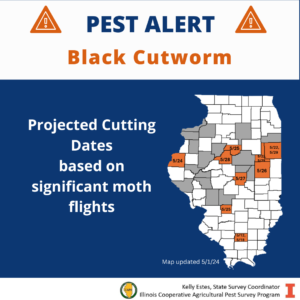Spring Moth Trapping Update
Spring moth trapping is one month in and we thank all of the volunteer cooperators for diligently sending in trap counts each week. 
The stormy weather pattern continues to bring north lots of black cutworm moths. Several counties have had significant moth flights. We expect more over the coming weeks.
While black cutworm flights have been steady these past few weeks, the same cannot be said for true armyworm. Trap catches have been low across the state.…





